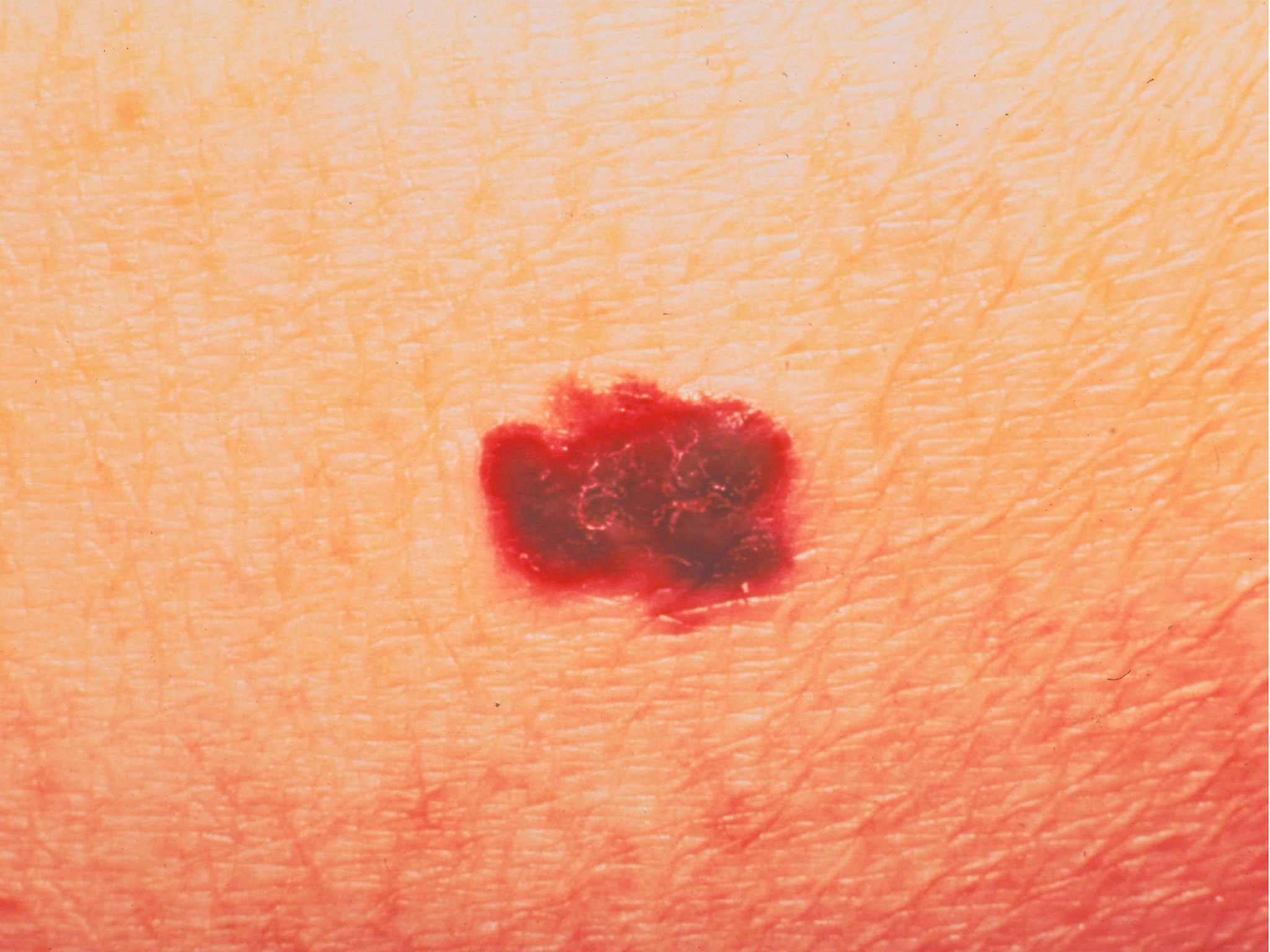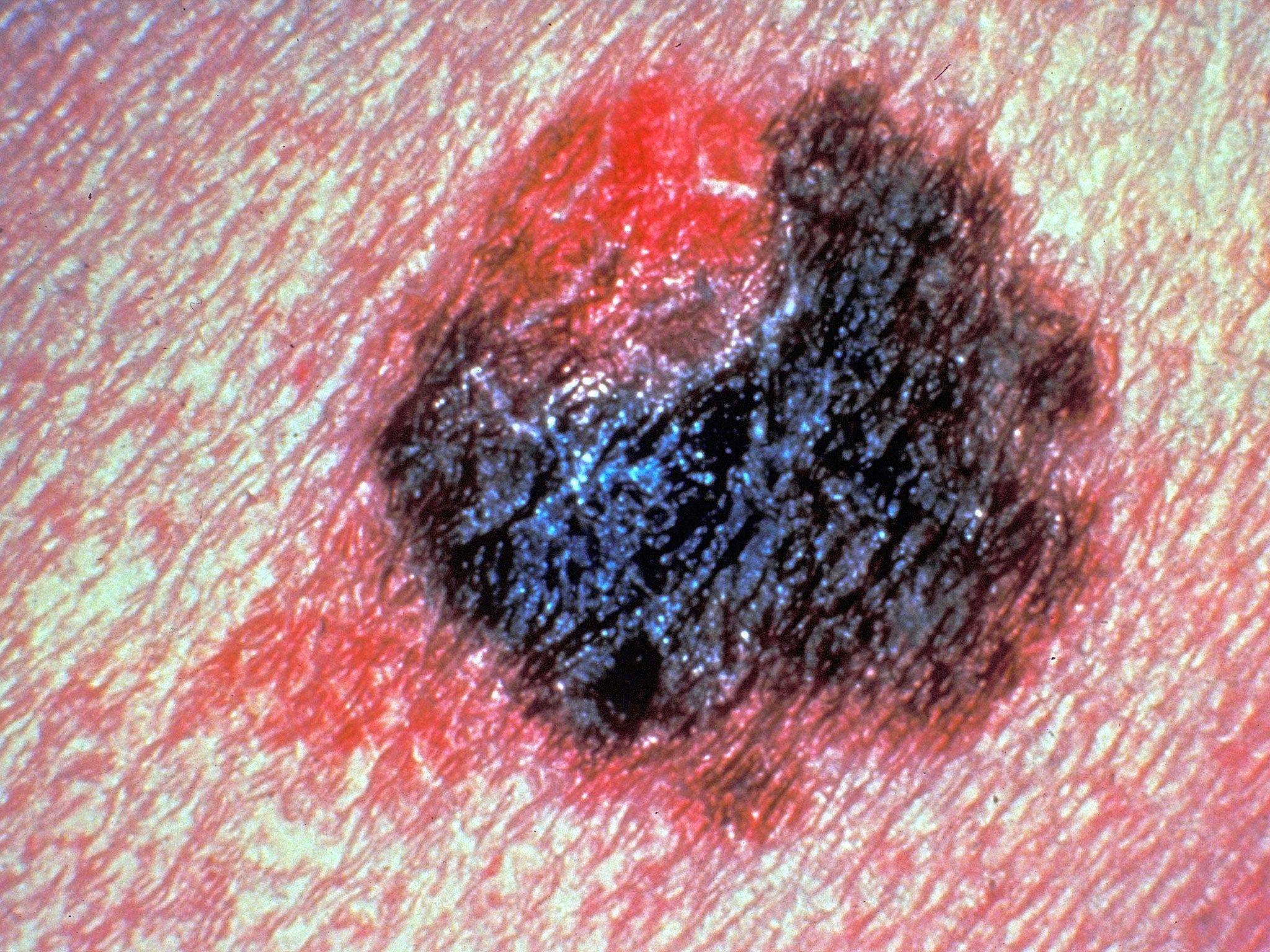The Independent's journalism is supported by our readers. When you purchase through links on our site, we may earn commission.
Melanoma: what are the stages - and how can I identify it if I have moles on my arm?
Melanoma is the fifth most common cancer in the UK, with around 13,000 new cases diagnosed each year

Your support helps us to tell the story
From reproductive rights to climate change to Big Tech, The Independent is on the ground when the story is developing. Whether it's investigating the financials of Elon Musk's pro-Trump PAC or producing our latest documentary, 'The A Word', which shines a light on the American women fighting for reproductive rights, we know how important it is to parse out the facts from the messaging.
At such a critical moment in US history, we need reporters on the ground. Your donation allows us to keep sending journalists to speak to both sides of the story.
The Independent is trusted by Americans across the entire political spectrum. And unlike many other quality news outlets, we choose not to lock Americans out of our reporting and analysis with paywalls. We believe quality journalism should be available to everyone, paid for by those who can afford it.
Your support makes all the difference.Malignant melanoma is a type of skin cancer which can spread to other organs in the body.
The most common sign is the appearance of a new mole or a change to an existing mole, according to the NHS.
In most cases, melanomas have an irregular shape and are multicoloured. They can also be larger than normal moles and can sometimes be itchy or bleed.
This can occur anywhere on the body, but the back, legs, arms and face are most commonly affected.

1. What causes melanoma?
Melanoma develops when some cells in the skin begin to develop abnormally.
Skin cells known as melanocytes grow and divide more quickly than usual and start to spread into the surrounding surface layers of the skin.
If the melanoma cells get into blood vessels or lymph channels, they can travel to other parts of the body in the blood or lymph system, making it harder to treat.
Melanomas are classified in stages. Stage 0 tumours are noninvasive and have not penetrated the skin. Stage I tumours have invaded the skin but are small and grow slowly and Stage II tumours are larger. More advanced melanomas at Stages III and IV have spread to other parts of the body.
2. What are the risk factors?
It is thought that exposure to ultraviolet (UV) light from natural or artificial sources may be partly responsible, according to Cancer Research UK.
Some people are at greater risk of developing melanoma than others, especially those with:
- Lots of moles or freckles
- Pale skin that burns easily
- Red or blonde hair
- A family member who has had melanoma
3. How can it be diagnosed?
People with more than 11 moles on their right arm could have a higher risk of melanoma, research published in the British Journal of Dermatology suggests.
Scientists found the number of moles on the right arm was the most predictive indicator of how many moles were on the entire body.
Having more than 100 moles on the body is considered a "strong predictor" for melanoma.

4. How can it be treated?
The main treatment is surgery, which is usually successful if the melanoma is diagnosed and treated at an early stage.
If it isn't spotted until an advanced stage, treatments such as chemotherapy and radiotherapy are used to slow the spread of the cancer and reduce symptoms.
5. Who is affected?
Melanoma is the fifth most common cancer in the UK, with around 13,000 new cases of melanoma diagnosed each year, according to the NHS.
More than 2,000 people die every year in the UK from melanoma.
Join our commenting forum
Join thought-provoking conversations, follow other Independent readers and see their replies
Comments